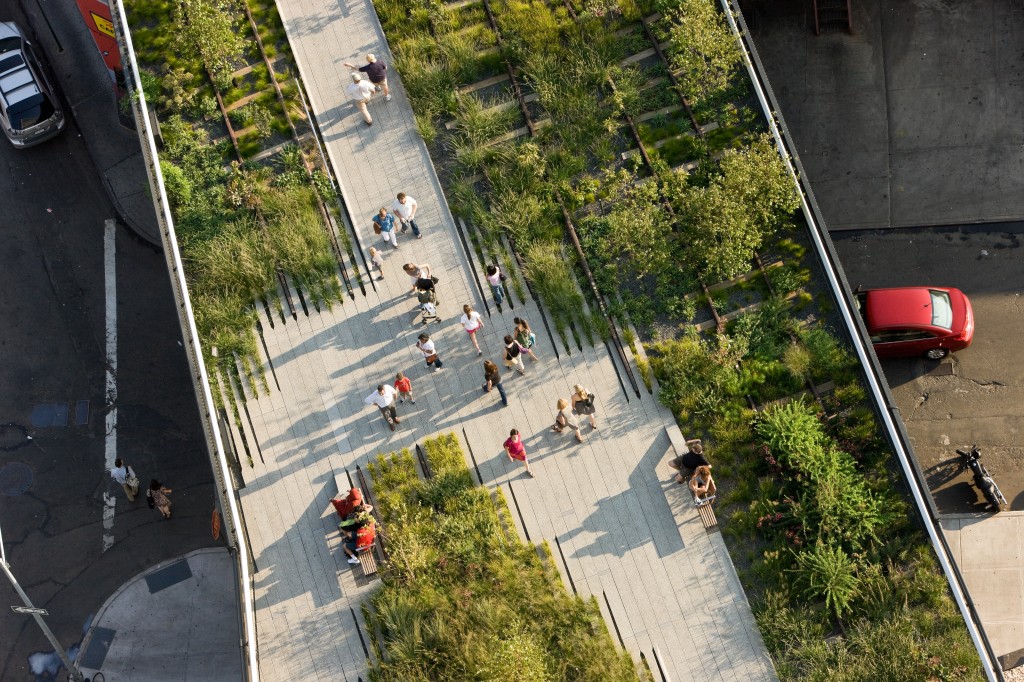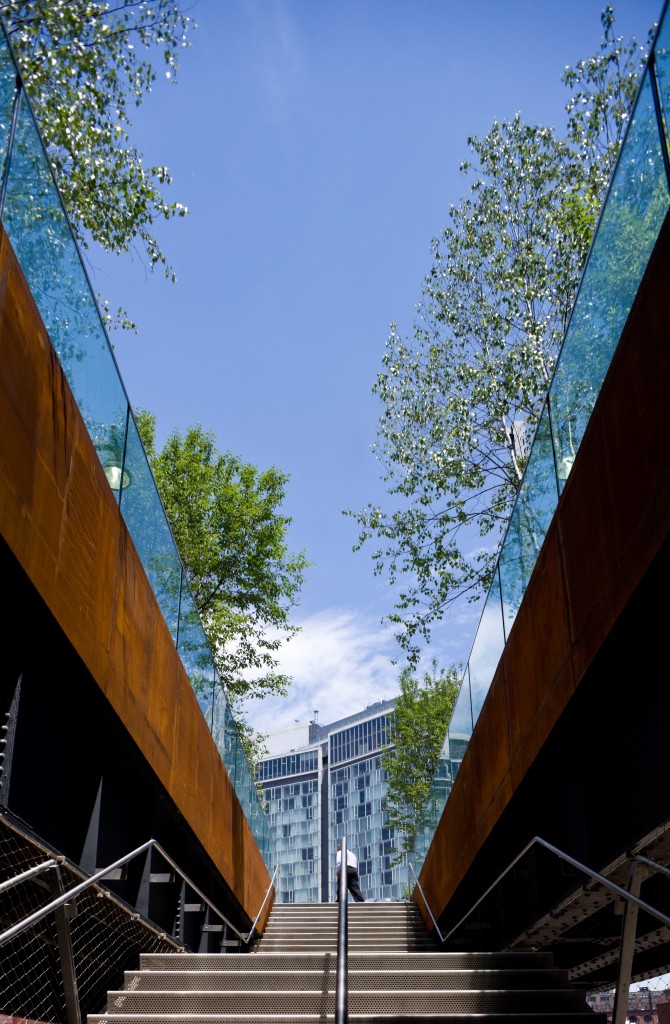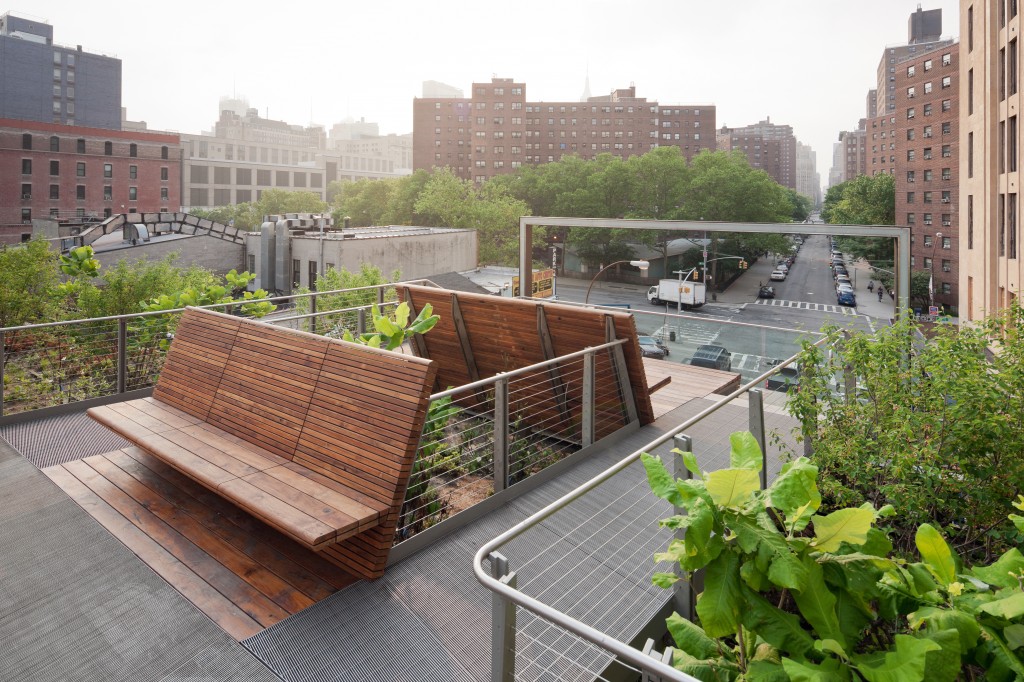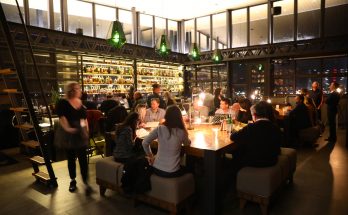
NEW YORK — An innovative park raised 30 feet above the streets of Manhattan stretches nearly a 1.5 miles, with wild prairie grasses waving in the breeze. Paralleling the Hudson River, it’s built on a former elevated railroad track that, from 1934 to 1980, carried freight along Manhattan’s West Side. Meat to the meatpacking district, agricultural goods to the factories and warehouses, mail to the Post Office.
 Think of it as a cosmopolitan railroad trestle. Call it the High Line. Walk it at sunset, when the visual stimulation of New York fades to black and a multitude of white lights reflect off the river, and the interiors of glass-box condos come into view.
Think of it as a cosmopolitan railroad trestle. Call it the High Line. Walk it at sunset, when the visual stimulation of New York fades to black and a multitude of white lights reflect off the river, and the interiors of glass-box condos come into view.
Grab a table near the 14th Street staircase. Have coffee and stare out at the river. Meander down the path and notice the faintly acrid smell of the plants.
Stop and investigate the public art. Sit down again on a bench that overlooks 26th Street and gaze at the bustle below.
There’s nothing exactly like the High Line. Except maybe a converted viaduct in Paris known as Promenade Planté. Other cities, however, are beginning to emulate the idea — and perhaps Atlanta might want to take notice. “Jeopardy!” has. The High Line recently rated a mention in the form of a question on the popular TV game show.
Take a tour with us.
New York City’s High Line, owned by the city and tended by the Friends of the High Line, stretches between Gansevoort and West 30th streets. It’s accessed via stairways and elevators at nine points and is fully wheelchair accessible. Just north of 14th Street, the path curves and splits into two levels. On the upper level, visitors can wade in a stream of water, weather permitting. Lounge chairs line the area in season, and food vendors offer everything from java to barbecue.
Scattered along the High Line is public art that question the conventions of public monuments and who they honor. The sculptures includes representations of Colin Powell, a meditative woman, a liquor store attendant and a satyr dressed in a kilt. The side of one building features a monumental tattered tapestry of tin and glass. Called Broken Bridge II, it’s meant to represent the fabric of the city.
The path also passes between magnificent glass buildings designed by Frank Gehry and Jean Nouvel.
 At West 20th Street, redbud and holly trees rise along the walkway. Even farther, a canopy of sumac and magnolia trees creates an arch.Then the prairie landscape returns, with hardy grasses and wildflowers growing between the original railroad tracks.
At West 20th Street, redbud and holly trees rise along the walkway. Even farther, a canopy of sumac and magnolia trees creates an arch.Then the prairie landscape returns, with hardy grasses and wildflowers growing between the original railroad tracks.
Part of the charm of the High Line is the contrast between a peaceful, contemplative landscape and the frenetic streets below. Climb a staircase, step closer to the sky and the pace of life changes. Anyone who’s spent much time wandering railroad tracks in the countryside might be amused at this urban effort to re-create the weeds found there. But the High Line is a designed landscape with a carefully created beauty. It’s hard to come away without admiring the accomplishment.
(Details HERE or at 212.500.6035. Subway stops include the L or the A / C / E lines to 14th Street and 8th Avenue.)
::
Stell Simonton is an Atlanta freelance writer whose work is found in the Christian Science Monitor, The Atlanta Journal-Constitution and Atlanta Parent, among other publications. She is a member of the Artist Conference Network



